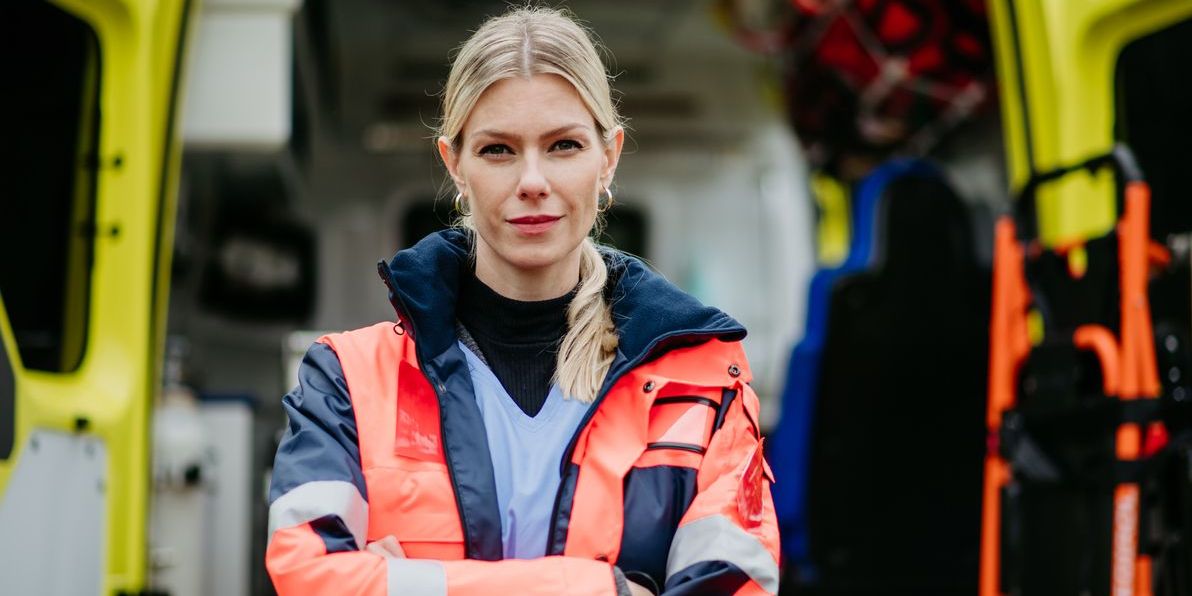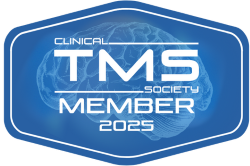
When we get in trouble, we call for help.
When we have an emergency, we need people who will respond right away. We need people who know exactly what to do. People who will show up at any time of the day or night to help us with whatever situation we face: a house fire, a car accident, a burglary, or an accident that requires medical attention.
That’s when we call our first responders.
The Homeland Security Act of 2002 defines first responders as follows:
“Federal, state, and local governmental and nongovernmental emergency public safety, fire, law enforcement, emergency response, emergency medical (including hospital emergency facilities), and related personnel, agencies, and authorities.”
The focus in this article is on firefighters, police officers, and emergency medical personnel. To frame the discussion, it’s important to understand how many people we’re talking about. There are police officers, firefighters, and emergency medical personnel in every community in the country – but how many are there total?
Data from the United States Census Bureau, the National Fire Protection Agency, and the Centers for Disease Control (CDC) shows the following:
- Law Enforcement (police officers):
- 763,830 total sworn police officers
- Fire Services (firefighters):
- 1,041,200 total career and volunteer firefighters
- Emergency Medical Personnel (EMTs, paramedics, ER department staff):
- 1,030,760 total
That data tells us there are almost 3 million people in the U.S. whose job is to spring into action whenever we have a problem. However, data from other sources – the National Institutes of Health and the Substance Abuse and Mental Health Services Administration (SAMHSA) – tells us something else:
“It is estimated that 30 percent of first responders develop behavioral health conditions including, but not limited to, depression and posttraumatic stress disorder (PTSD), as compared with 20 percent in the general population.”
That figure is a legitimate cause for concern, particularly when we realize that 30 percent of our total emergency personnel of around 3 million means almost a million of our first responders may need professional support for a mental health diagnosis.
Let’s take a closer look at the data on mental health issues among our first responders.
First Responders and Mental Health Conditions: Stress and Trauma on the Job
Before we dive into the prevalence data on mental health conditions among first responders, we should discuss the factors common to all first responder vocations that increase risk of developing mental health conditions. We’ll draw our data and related facts from two main sources: a SAMHSA publication called “First Responders: Behavioral Health Concerns, Emergency Response, and Trauma,” and a report published by the Kaiser Family Foundation (KFF) called “How Employers Can Help First Responders Stay Mentally And Emotionally Strong.” Unless otherwise indicated, these are the primary sources for the data contained in this article.
With that said, the first thing to address is stress. These are all stressful jobs.
We all face stress every day. Stress is part of life. There’s a common saying among emergency personnel that goes, loosely, something like this:
“We see people on the worst day of their lives.”
For the general public, the stress of those bad days usually fades as time passes. However, for emergency personnel, it’s different. They interact closely with people on the worst, most stressful days of their lives every day when they go to work. It’s true that not every call is stress level 10+++, but it’s also true that the situations emergency workers find themselves in, day in and day out, are far more stressful and traumatic than the situations most of us find ourselves in during a typical day at work.
A true awareness and empathy for that default level of daily stress is the first step in understanding why emergency workers are at increased risk of developing mental health diagnoses such as depression and anxiety. In addition to an elevated level of daily stress, SAMHSA indicates that “exposure to hazards is in the nature of their jobs.”
Hazards or traumatic experiences first responders may encounter on any given day include:
- Death
- Grief
- Loss
- Injury
- Pain
- Violence
In addition, first responders commonly experience:
- Threats to personal safety
- Long hours of work
- Frequent shifts
- Poor sleep
- Various physical hardships
Those circumstances increase risk of developing mental health conditions or issues that meet clinical criteria for a mental health disorder. Now it’s time to take a look at the latest prevalence data on first responder mental health.
First Responders and Mental Health Conditions: Facts and Figures
Evidence shows that depression, anxiety, and post-traumatic stress disorder are the most common mental health conditions among firefighters, police officers, and emergency medical personnel. We’ll look at the data for each of these conditions for each vocation, starting with depression.
First, we’ll offer this top-line set of statistics from the KFF report cited above:
- Depression and PTSD are five times more common in first responders than the general population
- 85% of first responders report symptoms related to mental health conditions
- Firefighters and police officers are more likely to die by suicide than while on duty
Those facts are sobering. Now let’s dive deeper into the details on depression.
Depression Among Emergency Personnel
Firefighters:
- 11% of career firefighters report symptoms of depression
- 22% of career female firefighters report symptoms of depression
- Depression is more common among volunteer firefighters than career firefighters
Police officers:
- 20% of police officers report symptoms of depression
- A study that tracked police officers for 10 years after the 9/11 attacks on the World Trade Center found that 25% of police first responders reported symptoms of depression
Emergency medical workers:
- 37% of paramedics report symptoms of depression
- 28% of non-paramedic EMS personnel report symptoms of depression
Next, we’ll look at rates of post-traumatic stress disorder (PTSD).
PTSD Among Emergency Personnel
Firefighters:
- 21% of firefighters worldwide report PTSD
- 15% of firefighters in the U.S. report PTSD
- PTSD is more common in volunteer firefighters than in career firefighters
Police officers:
- Approximately 17% of officers in the U.S. experience PTSD symptoms
- Approximately 11% of officers in the U.S. meet criteria for clinical PTSD
Emergency medical workers:
- 11% of ambulance personnel worldwide report PTSD symptoms
- 15% of ambulance personnel in the U.S. report PTSD symptoms
- A study on 387 EMS personnel in York County, PA found 35% of EMS personnel met clinical criteria for PTSD
The last set of statistics we’ll present include rates of suicidal behavior among first responders.
Suicidality/Suicidal Behavior Among Emergency Personnel
Firefighters:
A study of 1,027 current and retired U.S. firefighters conducted in 2015 showed:
- 47% engaged in suicidal ideation
- 19% made a suicide plan
- 16% attempted suicide
Police officers:
- Police are 54% more likely to die by suicide than people in non-law enforcement vocation
- A literature review of suicidality among police officers reported that 24% of police officers engaged in suicidal ideation at some point during their career
- One study found officers who reported job burnout had a 117% greater likelihood of suicidal thoughts than officers who did not report job burnout
Emergency medical workers:
- Overall, emergency medical workers were 24% more likely to attempt suicide than workers in typical occupations
- In a 7-year study in Arizona, EMTs were 39% more likely to attempt suicide than workers in typical occupations
That’s a large amount of data to process all at once. We can summarize this by saying the data are clear: first responders show significantly elevated rates of depression, post-traumatic stress disorder, and suicidality when compared to people working in non-first responder vocations.
That means they need professional support – and a new generation of therapies for mental health conditions can help them address their symptoms and achieve optimal mental health.
Innovative Techniques for Treating Mental Health Diagnoses: Transcranial Magnetic Stimulation (TMS), SPRAVATO®, IV Ketamine Infusions
We’ll preface this section with another set of troubling statistics that show first responders are unlikely to report or seek help for mental health issues. The KFF report cited above indicates that, among EMS workers:
- 70% say they never or almost never use mental health services/resources
- 57% say they don’t ask for help because they think there will be negative repercussions
- 40% specifically fear being demoted or fired
Part of our overall mission at Relief is to bring effective, evidence-based treatment to people with a clearly demonstrated need for support.
The data above indicate that first responders need our help – and we have the ability to give them the help they need.
At Relief Mental Health, we’re experienced in traditional modes of treatment, such as medication and psychotherapy. However, in recent years, innovative approaches to mental health treatment have been approved by the Food and Drug Administration (FDA), and evidence shows these treatments can reduce mental health symptoms when other approaches to treatment have failed.
At Relief, innovative therapies include transcranial magnetic stimulation (TMS), SPRAVATO®, and IV ketamine infusions. We’ll describe each of those treatment approaches now, beginning with TMS.
Transcranial Magnetic Stimulation (TMS):
- Deep TMS is a safe, effective, non-invasive therapy and is FDA-approved to treat the following diagnoses in adults ages 18 and older:
- Depression
- Anxious depression
- Obsessive-Compulsive Disorder (OCD)
- Smoking Cessation
- TMS is approved for off-label use for patients under age 18, however, insurance coverage for this age group is not available.
SPRAVATO®
- SPRAVATO® (esketamine) is a safe and effective FDA-approved intranasal medication for the treatment of:
- Treatment-resistant depression
- Major depressive disorder with:
- Suicidal ideation
- Suicidal behavior
IV Ketamine Infusions
- Ketamine is what scientists use to formulate SPRAVATO®
- Like SPRAVATO®, ketamine is part of a new generation of mental health treatment
- Off-label use of ketamine is effective for the treatment of:
- Treatment-resistant depression (TRD)
- Major depressive disorder (MDD)
- Major depressive disorder with suicidal ideation or behavior
- Bipolar depression
- Anxiety disorders
- Post-traumatic stress disorder (PTSD)
- Other trauma-related mental health issues
These three treatments are important because they have characteristics previous generations of treatment and therapy do not. In comparison to traditional psychiatric medications and techniques, TMS, SPRAVATO®, and IV ketamine infusions are:
- Fast acting. In some cases, symptom relief begins within hours.
- Fewer side effects. Traditional antidepressants may have negative side-effects, such as sexual dysfunction, insomnia, and increased suicide risk. In contrast, the side-effects associated with TMS, SPRAVATO®, and IV ketamine infusions are minimal, and fade within hours if they appear at all.
One reason we’re motivated to offer these innovative therapies to the first responder community is that we feel a deep connection with them. As mental health treatment providers, our job and our mission is to serve and support people who need help: that’s why we can relate to first responders. They dedicate their lives to helping people when they need help the most – and that’s exactly what we do. While our jobs aren’t as physically dangerous as theirs are, we understand the impulse to help.
We also understand how easy it is to not ask for help when you need help: we can sometimes fall into the same trap. We think we should be strong and independent. Some of us think that means we should be quiet about our own problems, because we need to focus on others.
Asking for help is a sign of strength, not weakness, and being open and honest about your challenges is a sign of courage, not fear.

